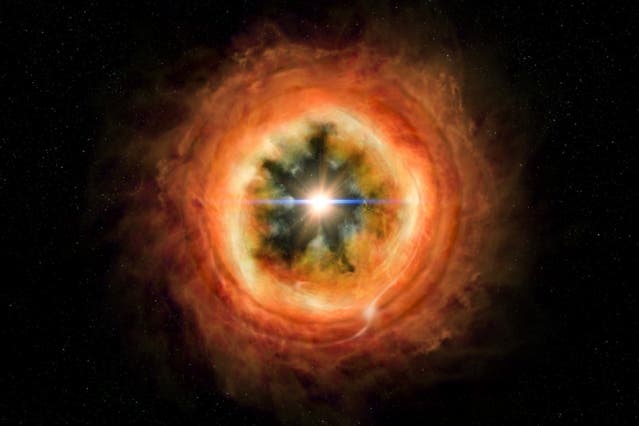
Around 4.6 billion years ago, there was no solar system because the Sun hadn’t formed yet. Instead, a huge cloud of hydrogen gas and dust covered most of our current interstellar vicinity. At some point, however, gravity flattened it into a disk called a solar nebula. Most of this material contracted around the center where the Sun would eventually form while the rest formed the planets, asteroids, and the rest of our solar system.
It’s been one heck of a journey, that’s for sure but there are still many things missing from this jigsaw puzzle. Now, scientists have come a step closer to understanding the full complexity of our solar system’s formation once a team from MIT reported the most precise estimate of the solar nebula’s age. According to MIT, the nebula lasted for three to four million years before it collapsed to form the solar system. Previously, estimates suggested its age was between one and ten million years.
Rocks don’t lie
Benjamin Weiss, a professor at MIT, and colleagues were able to know this starting from a seemingly limited data point: space rocks older than Earth itself. Specifically, four angrites were analyzed which formed exactly 4.653 billion years ago. These are the most pristine meteorite samples we have and scientists are very lucky these were discovered in such a good shape. Inside them, these ancient space rocks hold the secrets of what the environment was like when they were forged.
“Angrites are really spectacular,” Weiss said in a statement. “Many of them look like what might be erupting on Hawaii, but they cooled on a very early planetesimal.”
“One fell in Argentina, and was discovered when a farm worker was tilling his field,” he added. “It looked like an Indian artifact or bowl, and the landowner kept it by this house for about 20 years, until he finally decided to have it analyzed, and it turned out to be a really rare meteorite.”
Many rocks contain iron-bearing minerals that act as tiny magnets. As magma or lava cool, these minerals begin to form. At this point the molten rock has not completely solidified, so the magnetic minerals floating in the molten mass, become aligned to the magnetic field. When the rock finally solidifies, these minerals “lock in” the magnetic field as so many tiny compasses. By studying such minerals of various ages, we know, for instance, that Earth’s north-south poles haven’t always faced the same direction and have actually reversed many times in the planet’s history.
When the angrites were placed in a magnetometer, which possibly the sexiest name for a scientific instrument, the MIT researchers found little remnant magnetization. This indicates, in turn, that there was a very small magnetic field present when the minerals crystallized.
To see how the magnetic field that produced the rocks’ alignment must have looked like, samples were heated, then cooled again in the presence of a variable magnetic field. By gradually turning down the field, the researchers found the rocks experienced no more than 0.6 microteslas some 4.6 billion years ago.
“We can keep lowering the lab field and can reproduce what’s in the sample,” Weiss says. “We find only very weak lab fields are allowed, given how little remnant magnetization is in these three angrites.”
Specifically, the team found that the angrites’ remnant magnetization could have been produced by an extremely weak magnetic field of no more than 0.6 microteslas, 4.653 billion years ago, or, about 4 million years after the start of the solar system, as reported in Science.
Previously, in 2014, Weiss and colleagues analyzed ancient meteorites formed only 2 to 3 million years after the solar system’s formation. These samples indicated a magnetic field that was 10 to 100 times stronger.
“It’s predicted that once the magnetic field drops by a factor of 10-100 in the inner solar system, which we’ve now shown, the solar nebula goes away really quickly, within 100,000 years,” Weiss says. “So even if the solar nebula hadn’t disappeared by 4 million years, it was basically on its way out.”
Since the solar nebula lifetime critically affects the final positions of Jupiter and Saturn, it also affects the later formation of other terrestrial planets, our home Earth included.
“The gas giants must have formed by four million years after the formation of the solar system,” Weiss said.
“Planets were moving all over the place, in and out over large distances, and all this motion is thought to have been driven by gravitational forces from the gas. We are saying all this happened in the first four million years,” he added.


